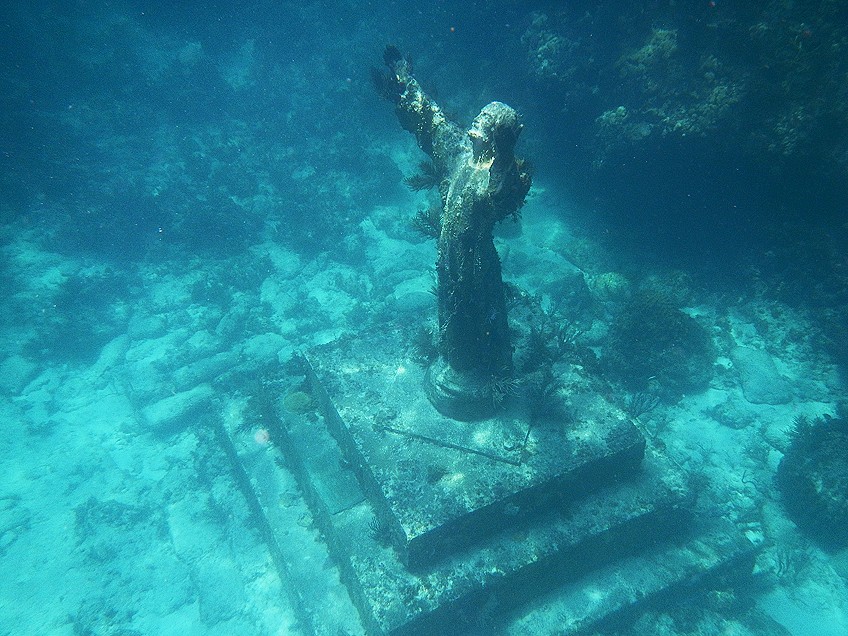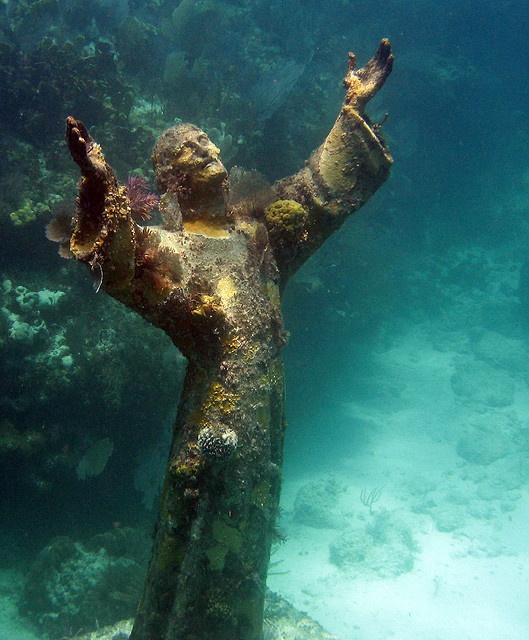You’ve likely seen images of the underwater Jesus statue submerged deep beneath the waves and wondered about its location. The answer to this question is not straightforward because there are several “Christ of the Abyss” statues distributed around the world.
The Original Bronze in San Fruttuoso, Italy (1954)
The original bronze statue, over 15 meters deep, was installed on the seabed on August 22, 1954. This was at the suggestion of renowned Italian diver Duilio Marcante, who wanted to honor his colleague Dario Gonzatti, who died during a dive a few years earlier at that site. Sculpted by Guido Galletti, the statue features Jesus with arms raised in an invoking gesture. It stands 2.5 meters tall and weighs 260 kilograms without its base.

After Marcante’s death, a plaque was placed at the monument’s base in his memory. The statue was recently restored to prevent deterioration and corrosion and to reattach a hand that had been separated by an anchor.
The Grenada Copy (1961)
Another bronze sculpture, made from the same mold as the original, is located at Carenage port in Grenada. This replica commemorates the disaster of the Bianca C, a famous luxury cruise liner from Italy, dubbed the “Titanic of the Caribbean.”

On October 22, 1961, a massive explosion occurred in the ship’s boiler room while it was docked in St. George’s. Local fishermen quickly deployed their boats to rescue about 700 passengers and crew, with only one casualty. They set up a temporary hospital for the injured and welcomed others into their homes. Two days later, the ship sank near Grand Anse Beach.
In recognition of the brave efforts of the Grenadians, Costa Line presented the “Christ of the Deep” statue replica.
The American Copy (1962)
The “Christ of the Abyss” in Key Largo is the third bronze cast from the original mold. It is located in Pennekamp State Park. The statue’s journey began with an exhibition and celebration at the Palmer House in Chicago, which included a luncheon and the handover to the United States. It was then stored at O’Hare Airport while a permanent location was sought. With the help of Floridian Senator John Pennekamp, it was decided that the statue would be installed in Key Largo. However, there was no funding to transport it there.

The Florida Otter Diving Club took the initiative, and with assistance from the Naval Reserve, a training flight moved the statue to Orlando, Florida, where it was displayed.
A question arose about why such a beautiful monument was being placed underwater, where few people could see it. The statue continued its journey to the Florida Keys in January 1964, stopping at the Art McKee Museum. In the spring of 1965, after designing a concrete base and completing other procedures, the statue was delivered to Pennekamp Park.

It was inaugurated on June 29, 1966, at Harry Harris Park, but first had to withstand Hurricane Betsy on September 8, 1965, which tested its installation with Category III winds. Despite initial doubts, the statue remained firm and majestic.
In this article, we explored the three versions of the underwater Jesus statue. The original bronze statue by Guido Galletti is in San Fruttuoso, Italy. The first replica is in Grenada, and the final replica, “Christ of the Abyss,” is in Key Largo. These captivating statues, submerged in the sea, continue to inspire and fascinate divers and visitors from around the world.




